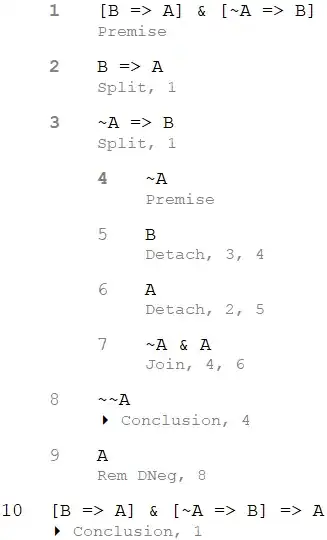I am a little confused whether the following set of arguments can constitute a proof by contradiction:
Required to prove: Statement A is true.
Assumption: Suppose statement A is false.
We then show that if A is false then a (different) statement B is true.
But, statement B is true implies A is true.
Hence, A must be true.
These set of arguments feel a bit bizzare to me and perhaps might be incorrect. I am unable find a mistake.

